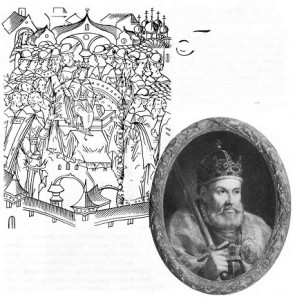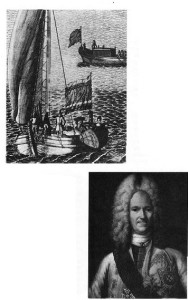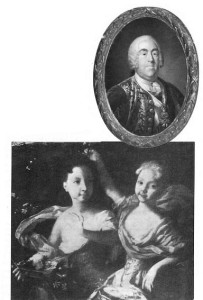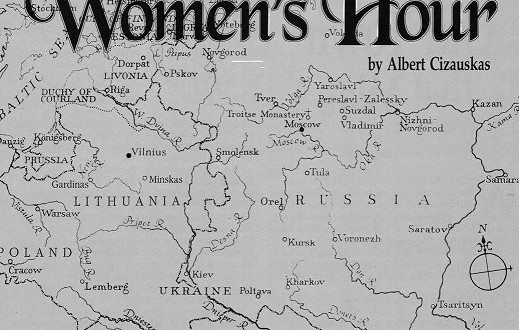by Albert Cizauskas.
BAD, BOLD AND BRILLIANT, six women ruled Czarist Russia in their own right and notas royal wives during the most turbulent years in its history. Few are aware that three were of Lithuanian ancestry. Matching skill with skill, violence with violence and guile with guile, all were gifted in various ways that made them at least the equal of male Czars that came before and after.
Beginning with Elena Glinskaya in the 16th century, and ending with Catherine the Great more than two hundred years later, these women advanced the cause of women’s rights by pursuing their own. In doing so, they fully enjoyed the privileges that came with the exercise of autocratic power, which included the gratification of their robust sexual appetites. In every test that can be applied to an effective monarch at that time, they showed that ability and achievement are a matter of genes and not of gender.
During the two centuries these extraordinary women ruled, the small Duchy of Moscow, hemmed inby Poles and Lithuanians on the west, and Tartars on the east and south, expanded into the largest power in Europe. Much of this is attributed to the aggressive foreign policy these women pursued, including against the Polish-Lithuanian Commonwealth.
Theirs is the story of brilliant women ruling a bitterly antifeminist society, a fascinating chapter inthe march of Russia to super power status.
‘A Beautiful Lithuanian. Virgin’
The FIRST of the six women to Rule was Elena Glinskaya, described by a biographer as“…a beautiful Lithuanian virgin …dark…passionate …educated”. Niece of a Lithuanian noble of Tartar origins, her beauty and emancipated behavior caught the attention of the aged ruler of Moscow, Grand Duke Vasily III. Enchanted by Elena, so different from the submissive Russian women, Vasily went so far as to cut off his beard to please her, an almost sacrilegious thing for a Russian, particularly a Grand Duke, to do.

Vasily’s infatuation with Elena went beyond that of a casual flirtation. His 21-year old marriage had thus far produced no offspring, so Vasily, packing his wife off to a monastery, combined his dynastic ambition to secure a family succession with his desire to possess Elena. Despite the fact that she was a foreigner in a land that hated and feared foreigners, the Grand Duke married the Lithuanian woman in public and colorful festivities that lasted three days.
Hovering over these ceremonies, however, was the strange prophecy of a dissenting Orthodox Patriarch who denounced the second marriage because of the existence of a first wife. He predicted with fearful certainty that Vasily would“…have a wicked son …rivers of blood(would) flow …your cities (would) be devoured by flames”. That son became known in history as “Ivan the Terrible”.
It took four years and ceaseless supplications before the second marriage bore fruit. Some even gossiped that Elena had borrowed the services of a lover to supplement the efforts of her anxious but incapable spouse. Eighteen months later, a second son was born. By this time, Vasily, fatigued by his exertions, died suddenly of a mysterious infection. Before he died, he appointed his wife as regent to be assisted by her uncle and the two brothers of the Grand Duke.
Elena was not content to be a regent in name only. She seized the reins of authority quickly and effectively, starving to death one of her brothers-in-law and poisoning the other. Their supporters were tortured and hanged. Even her uncle was punished when he dared criticize her love affair with one of the younger nobles.
On the other hand, she proved to be an able though harsh ruler. She enhanced Moscow’s prestige by establishing good relations with other states. Her military quarrels with the Tartars and the Lithuanians continued the process, already begun, of the Duchy’s steady expansion into what became eventually the vast Eurasian empire of Russia.
Elena’s troubled reign as regent ended after five years of bloodshed and turmoil in 1538 w hen she herself was poisoned, a violent prelude to the even more violent reign of her son, Ivan the Terrible.
A Peasant Woman Becomes Empress
The FIRST Russian Empress, like the first woman regent, was a non-Russian. Both were of Lithuanian heritage but Martha, unlike Elena, was a peasant and an illiterate orphan. She had, however, other qualities which more than compensated for her limitations.
Martha has been described as a “…comely, sturdy girl w hose dark eyes and full figure attracted attention”. This is putting it mildly. Under circumstances that would tax the credibility of the most fanciful romance novel, Martha, in the space of two years, moved from her war-ravaged home to the royal bed of Peter the Great and eventually even to Peter’s throne.
Her first Russian master was a Field Marshal who took her at the age of 17 as war booty. Next followed Prince Alexander Menshikov, a Lithuanian adventurer who had risen to be Peter’s chief adviser. Acting on the principle that rank has its privileges, the Prince simply transferred Martha from the Marshal’s entourage to his own household.
It was now Peter’s turn . Charmed by Martha’s “warm and generous nature”, he lost no time installing her as his favorite mistress. The Czar had already consigned his first wife to a monastery, bored by her cloying personality. Finding now in Martha a genial foil to his own impulsive and occasionally brutish character, Peter decided to marry her, albeit in secret so as not to provoke opposition to a foreign peasant woman of dubious background.
Martha, however, was gifted with more than an attractive figure and an accommodating nature. She possessed an enormous fund of common sense and was selflessly dedicated to Peter, never meddling in affairs of state or becoming involved in court intrigues. On the other hand, Martha was a cheerful yet thoughtful companion, taking part in Peter’s inner life and encouraging his hopes and aspirations. Equally important, her great physical energy matched Peter’s restless vitality. She even became a camp-follower in the true sense, accompanying Peter on many of his military campaign, as cheerfully sharing his hardships in the field, as she enjoyed the amenities of the Russian court. Martha was indeed an ideal mate for Peter. So beneficial became her hold over him that she was the only person able to calm the Czar during his frequent irrational rages and epileptic-like fits.
Unlikely as it may have seemed at first to Peter’s inner circle, a spirit of affection and understanding, on top of the deep sexual attraction, grew up between the two of them. After five years of a congenial married life, Peter regularized his wife’s position by marrying her publicly with the customary pomp. The Lithuanian peasant woman now officially became the Czarina Catherine, bearing Peter 12 children over the course of 20 years, one of whom, Elizabeth, became an Empress herself.
When Peter died in 1725, Catherine, who had been designated by her husband as his successor, became the first woman to ascend the Russian throne as Empress in her own right. Peter, as he had with many other Russian traditions, had broken the aile of hereditary male primogeniture.

Catherine I, as she was known, enjoyed a relatively peaceful but brief reign. It lasted barely two years during which she left most of the affairs of state to the Czar’s former aide, Prince Menshikov, from whom Peter had appropriated the teen-aged peasant girl, Martha, over two decades earlier. There was no renewed liaison between Menshikov and Catherine, however. The Empress remained loyal to Peter’s memory. Her death, in contrast to that of Elena, her countrywoman, was due to natural causes, brought on by series of chills and fever.
“The Most Beautiful Woman in Europe’
ELIZABETH inherited many of the physical and personal traits of her Lithuanian mother, Catherine I – beauty, vitality, a genial disposition and common sense. From her giant of a father, Peter the Great, she inherited his genius for government and his restless urge to transform a semi-barbaric country into a major European power.
Elizabeth was only 18 when her mother died. Her education had been meager but her “extraordinary beauty and vivacity” made her a general favorite. During the reign of her cousin Anne, however, she led a precarious existence due to Anne’s envy of Elizabeth’s good looks and popularity. Elizabeth was the type of woman who delighted equally in strenuous masculine pursuits, such as hard riding and hunting, and in the more delicate graces of the ballroom where she excelled as a dancer. On top of this, she was also the daughter of the great Peter with a better claim to throne than the reigning Empress. Such a woman was indeed a potential threat to unseat the dour and sedentary Anne.
Partly to deflect Anne’s suspicions and partly to savor the delights available to a Russian princess, Elizabeth abandoned herself to a frivolous and sensual existence. Rumors abounded of her numerous lovers and escapades. One of her favorites, incurring the jealous wrath of the Empress, had his tongue cut out and was banished to Siberia. But Elizabeth enjoyed her role of heedless libertine so genuinely that she managed to survive a decade of Anne’s envious watchfulness.
Following Anne’s death in 1740, a regency was formed under her grandniece in accordance with the late Empress’ wishes. Elizabeth’s position worsened because, even though she was the logical successor, she had been purposely thrust aside in favor of Ivan VI, the infant son of the grandniece, whose claim to the throne was extremely tenuous. Rising dissatisfaction with the regency rendered Elizabeth’s situation untenable, exposing her to the bleak prospect of banishment to a nunnery, a favorite Russian expedient for neutralizing troublesome women.
Finally, urged by her supporters as the danger of apprehension daily became more imminent, Elizabeth took action. Dressed in a military uniform, which set off her figure to advantage, she rode to the barracks of the sleeping guards late in the night of December 6, 1741. Appearing before them she called out: “You know whose daughter I am. I come to you in my father’s name. Will you follow me?” The mesmerized guards, whom Elizabeth had earlier taken the precaution of befriending, followed her with enthusiasm. As Russian soldiers, they had detested the large number of foreigners who had held high posts in Anne’s government and had been retained by the regency. Peter’s daughter, they believed, would oust foreigners and restore Russian blood and vigor to the Russian government.
Having put her cards on the table, Elizabeth, hitherto self-indulgent and indolent, acted swiftly. She ordered the apprehension of the government’s leading ministers and went herself to the bedroom of Ivan’s mother, uttering the grim words: “Time to get up, sister”. By early morning, the government was securely under her control. In military uniform, she showed herself to cheering crowds and received the homage of enthusiastic boyars and military. Among her first acts was the imprisonment of the infant Czar and his parents, the regents. She also deposed the non-Russian ministers, who were condemned to death. Elizabeth, however, in a surprising exception to the prevailing mores of the time, opposed capital punishment. She rescinded the death penalty, exiling them instead. Her supporters, were lavishly rewarded with honors, wealth and high position.

Elizabeth’s coronation exceeded in splendor all previous coronations, even in a country accustomed to royal extravagance. Festivities were stretched out over a month, with ballets, operas, dinners and balls following ne another in glittering profusion. In the midst of all this, Elizabeth somehow found time for religious ceremonies and private prayer. She shared with her countrymen that mingling of sensuality and religious fervor that has always been a mark of the Russian personality.
Elizabeth’s appetite for excessive luxury and dissipation marred an otherwise notable reign. While sympathetic to cases of misery when these came to her personal attention, she was unable to appreciate the relationship between the worsening lot of the peasants and the heavy taxation needed to support the prodigality of her court.’ In addition, she had inherited from both parents a strong sexual drive which she indulged without restraint as Empress. She is believed to have married secretly a handsome Ukrainian peasant, squandering huge sums to maintain him and his numerous relatives. But she also took her pleasure indiscriminately with others: a hidden staircase led from a secret apartment to her boudoir so that her lover for the night could remain incognito.
None of Elizabeth’s undesirable traits, however, prevented her from becoming an effective ruler. She streamlined the administrative apparatus of the government, installed able Russians in all top policy-making posts and adroitly utilized the various skills and personalities of her ministers, rising above the constant intrigue and jealousies that surrounded her.
Another praiseworthy aspect of Elizabeth’s reign was her strong support for learning and the arts. While the Germans had been dispossessed of their pre-eminent role in Russian political life, the Italians succeeded them in music and architecture and the French in literature and social etiquette. Baroque palaces transformed St. Petersburg and Italian musicians and composers found enthusiastic welcome. The theater flourished. The plays of Corneille, Moliere and Racine were favorites at the court. French influence extended even further. Elizabeth herself corresponded with Voltaire who wrote a monumental history of Russia to please her.
Elizabeth’s strong suit was in foreign policy. One of the most intense rivalries of European history revolved about her bitter duel for many years with Frederick the Great of Paissia. Daughter of a Lithuanian mother, she understood the menace of an expanding Prussia and through her stubborn resistance subdued one of history’s most able warrior kings. In doing this, she involved all the great powers of Europe in a struggle called the “Seven Years’ War”, the first truly “world war” in the sense that it encompassed for the first time the British and French colonies in North America. Before Elizabeth, Russia had been an awakening giant; under Elizabeth the giant stretched across the European continent, permanently altering its balance of power.
Perhaps the single act of the Empress that had the most profound influence on Russia had nothing to do with war or diplomacy. Unable to bear children, Elizabeth, who had a strong sense of family, sought to ensure to her nephew the succession to the throne. He was Peter, the son of a sister who had married a minor German prince. Peter, however, was sickly, semi-retarded and intrigued by all things Prussian. It was not surprising that aunt and nephew developed an intense dislike for one another. But it was Elizabeth’s selection of an even more insignificant young German Perhaps the single act of the Empress that had the most profound influence on Russia had nothing to do with war or diplomacy.
Unable to bear children, Elizabeth, who had a strong sense of family, sought to ensure to her nephew the succession to the throne. He was Peter, the son of a sister who had married a minor German prince. Peter, however, was sickly, semi-retarded and intrigued by all things Prussian. It was not surprising that aunt and nephew developed an intense dislike for one another. But it was Elizabeth’s selection of an even more insignificant young German princess as Peter’s bride that changedthe course of Russian, and European, history. The young bride eventually became Catherine the Great.Thus, Elizabeth, who had purged her government of German advisers and had pursued an inflexible anti-Prussian policy, had chosen a Prussophile nephew to be her successor and, for his wife, a German princess who eventually became the most success ful ruler of Czarist Russia after Peter the Great.
Two decades of high living finally took its toll of the “most beautiful woman in Europe”. Her figure had become swollen and she had to be carried from room to room. She would not, however, deny herself the richest of foods now that other pleasures had become impossible. Finally, on Christmas day, 1761, Elizabeth died from the over-indulgence of a lifetime.
Frederick of Prussia, surrounded by Russian armies and facing annihilation, rejoiced. He had little doubt that the Empress’ nephew, who was widely known to admire Frederick as much as he detested his aunt, would lift the siege. Peter did, permitting Elizabeth’s implacable enemy to survive because she had died.
 DRAUGAS NEWS Lithuanian World Wide News in English
DRAUGAS NEWS Lithuanian World Wide News in English
